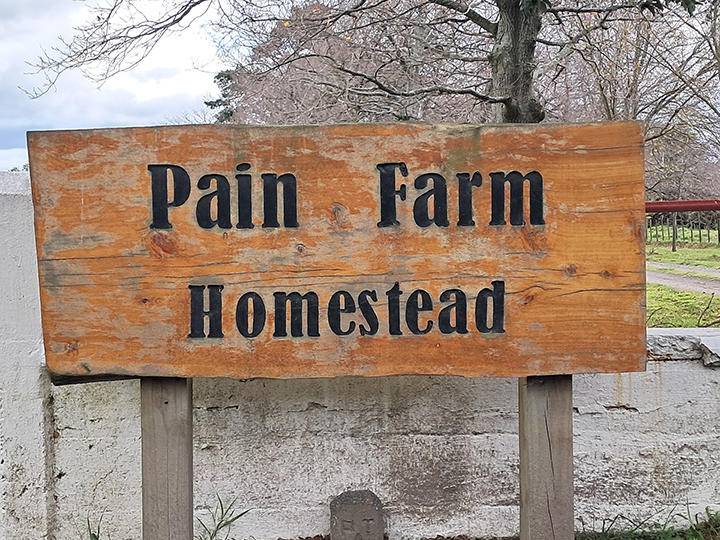District council plans to use Pain Farm Estate’s land for dispersing treated sewage wastewater have been scrapped, with the council apparently looking for alternative sites for the water disposal.
The decision could leave its wastewater disposal plans without a land dispersal point. Currently some overflow goes into the Ruamahanga River.
“It is a positive outcome,” one public representative told The Star, speaking prior to the council’s formal announcement of the wastewater decision.
Said another, speaking ahead of the announcement: “it’s a great outcome.”
A public meeting over using the land for wastewater disposal last year was almost unanimously opposed to the council’s plan, while nearby residential property owners were united in their opposition.
But halting the project to use the 85-hectare Pain Farm for wastewater disposal leaves the council with a raft of headaches – including whether it has, or now needs to buy/lease, an alternative land area for dispersing the treated sewage wastewater.
It also gives no answer to the long-fought battle to stop the mismanagement of the late Martinborough businessman George Pain’s 85-hectare estate.
These include many legal questions – over the use of the land, control of the estate, use/dispersal of its income and whether its current status as a community-owned trust should change.
The issues over Pain Estate have simmered since the 1960s when the then council sought a Supreme Court ruling over changing the nature of George Pain’s Will, in which he left the estate for sports grounds and children’s playground development.
The key point defined by the Supreme Court’s 1966 approval of a scheme was that the farm could be used as an endowment, with the income from the Trust to be used for the benefit of the Martinborough community.
Since that ruling, four sets of formal legal advice have upheld the council’s actions.
But in recent years, community groups, public meetings and even the two most recent Martinborough Community Board’s elected members have demanded the district council pass oversight of the estate and its use to an independent trust.
At present the council acts as Trustee and is the key beneficiary of any income made – something lawyers have warned breaches trust law.
As one senior lawyer had earlier written in a note to council: “At the moment, SWDC is in breach of the following Trustee duties:
duty to avoid conflicts of interests (i.e. between the Council and the benefit of the community);
duty to act impartially;
not to exercise any power for a trustee’s own benefit.”
An indicative legal issue: “any charitable trust with bequeathed land should be registered with the Crown Law Office.” Enquiries with the Crown Law Office showed it has no records of the (Pain Estate) charitable trust. “That suggests SWDC has been operating outside of legal requirements for several decades,” the lawyer wrote to council.
As The Star reported last August: “for the past 12 years South Wairarapa District Council has been quietly filtering excessive amounts of cash out of what are known internally as the Pain Estate accounts – and has suddenly admitted its financial filching by returning $302,000 to the Martinborough Community Board.
“New council Chief Executive Janice Smith turned up the financial finagling by council officials, noting in a report last month to Pain Estate’s governors, the Martinborough Community Board, that the excess funds transfers began in 2011-12 “where a significantly increased level of internal charges occurred.” How it ‘occurred’ was not mentioned in the report.
In 2019 the then Community Board submitted a range of questions on Pain Estate – its costs, income and internal charge levels – but got no answers. Few have been forthcoming since.
Publicly-elected Community Board members have recently confirmed they remain in the dark about the accounting involved, including details of leases for both farmland and the town’s rubbish transfer site which is located on Pain Estate land, or how the refunded $302,000 figure was calculated by SWDC.
Smith explained the figure as follows: $222,000 was “overhead allocation correction,” almost $54,000 was “personnel cost correction,” $14,000 was “expenses correction,” and almost $12,000 was “rates repaid by tenants’ correction.”
How much council had been allocated from the estate’s income from leases and rents was not disclosed.
The lawyer quoted above also noted that legally “the income of the trust lands should be used:
“in maintaining and improving the Borough’s parks, sports grounds, camping ground, swimming baths, providing, equipping and maintaining sports facilities and a children’s playground in such manner and in such proportion as the Council shall from time to time decide,” – requirements set out in George Pain’s Will.
Currently also unknown: whether the latest round of legal advice to council has confirmed the need for a whole new trust agreement, with independent trustees in charge of the estate and its activities, has finally been recommended or proposed.
Last year The Star reported that South Wairarapa District Council had been told it could lawfully proceed with its plan to spray treated sewage wastewater across at least 53 hectares of Pain Farm.
At the time council was formally advised by Chief Executive Janice Smith it had cleared all legal hurdles and could press “Go” on the plan.
Further, she advised council that it had acted properly and legally throughout “the (community and other) consultation that occurred” over the effluent disposal plan – and no further consultation was needed.
In 2023, council submitted a notice of designation to the Combined Wairarapa District Plan relating to all of Pain Farm for “the operation, maintenance, and improvement of a waste treatment and disposal facility.”
Council has now withdrawn its current Notice of Requirement for the Pain Farm Designation. It still has a 2016 resource consent to dispose of treated waste-water to the land.



